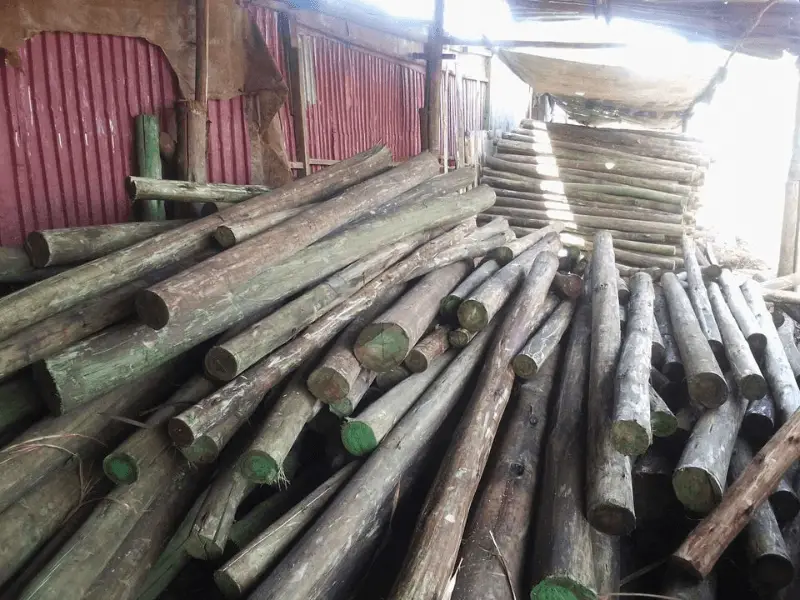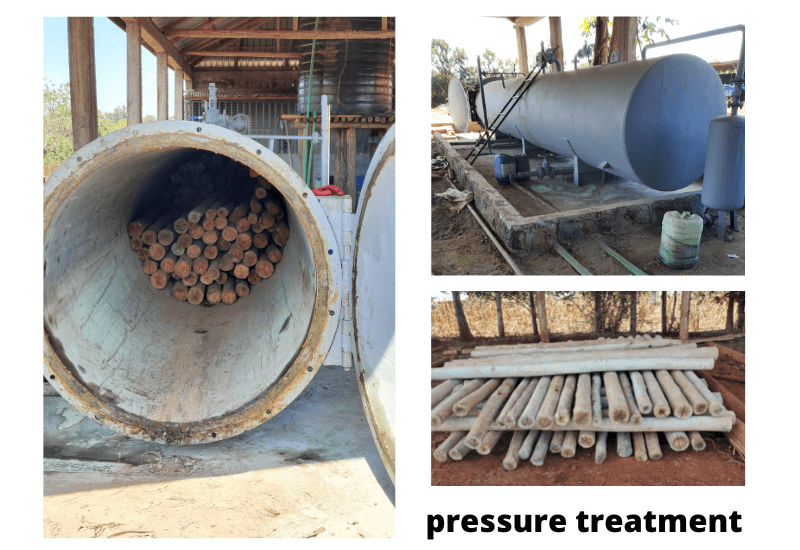Pressure-treated wood is a popular choice for outdoor structures due to its ability to resist rot, insects, and decay. Despite its durability, there are several factors that can affect how long pressure-treated wood will last. While it can last up to 40 years without signs of wear and tear, certain projects like decking and flooring may only last about a decade. Other variables, such as the wood type, chemical treatment, exposure to wet environments, and maintenance, can also impact the wood’s lifespan. In this article, we will explore each of these factors in detail to provide a comprehensive understanding of pressure-treated wood longevity.

Read Next
- Can I Use Pressure-Treated Wood Indoors?
- Pressure-Treated Wood for Roof Rafters
- How to Treat Cedar for Outdoor Use
- Best Deck Sealer for Old Decks
- Redwood vs. Cedar: A Comparison
Factors affecting pressure-treated wood’s longevity
1. Climate
The type of climate in the area you are in might influence how long your pressure-treated wood will last. This will be mainly influenced by where you plan to use the wood.
The wood will stay in ground contact longer in high humidity, sub-tropical, or tropical areas. Wood made for ground contact is mainly used on the ground or in contact with the land, soils, vegetation, or debris.
In addition, the wood is also best for freshwater applications or where there is exposure to daily moisture. Wood made for ground contact has twice the ability to hold chemicals as one made for above-ground use.
2. Type of wood.
While hardwoods are generally more durable than softwoods, there are several softwood species that are also known for their durability. The longevity of these softwoods can be attributed to their ability to retain preservatives better than other softwoods. Here are some examples of durable softwood species:
Pine/Cedar: Southern pine is a commonly used wood for framing in the eastern United States due to its sturdy logs and high sapwood content, which is good at absorbing preservatives. Red pine and Ponderosa pine are often used in the northern United States and Canada.
Douglas fir: This species is prevalent in the western United States and Canada and is known for its strength and resistance to decay.
Hem-Fir: Although this western species is weaker and more prone to warping and splitting than Douglas fir, it is highly responsive to preservation and is a popular choice for outdoor projects.
3. Chemicals used
Preservative chemicals are infused into the wood under pressure in a vacuum-sealed tank, retort, or steel cylinder during the pressure treatment process.
The amount and type of chemicals used in this process will affect how long the wood will endure. For example;
- Chromated Copper Arsenate (CCA) is used in heavy applications like shakes and shingles, utility poles, and wood foundations. In this type of treated wood, the functions of copper and arsenate act as insecticides, and chromium protects the wood from UV rays. Also, treating wood with CCA makes it challenging to remove the chemical from the wood, hence making the wood more durable.
- On the other hand, wood made for lighter-duty projects is treated with Amine Copper Quat (ACQ), Copper Azole (CA), and Ammoniacal Copper Zinc Arsenate (ACZA), each having a limited range of applications.
Many other chemical preservatives are available, such as Creosote, Pentachlorophenol, Acid Copper Chromate (ACC), Borates, Copper Naphthenate, Copper-HDO, and Polymeric betaine.
Also, you must use the proper hardware and fasteners for the type of pressure-treated wood used. The chemicals will corrode the metal if it is not designed to handle the chemical treatments. Therefore, the corrosion will impair the project’s integrity, thus reducing the life of the wood.
4. use/project type.
What you plan to do with the wood will decide the type of pressure treatment it receives, which will affect how long it lasts.
Various projects subject the wood to different degrees of stress. Those pressures, in turn, require varying amounts of preservatives to provide the best possible protection for the wood.
The amount of preservative required is known as the “retention level.” This is the amount of preservative retained in the wood after treatment. Each preservative has its own retention level for these projects.
Moreover, each wood is labeled with a tag showing its correct use. These appropriate applications range from the lightest treatment (UC1), best only for interior dry conditions, to the heaviest treatment of UC5C, best for saltwater marine conditions.
5. Maintenance.
Proper outdoor wood care and maintenance will extend its life. Apply a water repellent to decks six weeks after construction is completed and then every year.
In addition, check to see if any fasteners, bolts, nails, or screws are loose due to wood failure or corrosion and replace or fix them. Replace any rotten wood to keep the decomposition from spreading to the wood that comes into contact with it. Also, when needed, apply and reapply the weather-resistant stain.
How do you make treated wood last longer?
To improve the durability of your pressure-treated wood, it is important to apply a water-repellent sealer annually and promptly clean any mildew that appears on the surface. Investing in pressure-treated wood is a wise decision, especially for homeowners who have permanent residences and value long-lasting materials. By utilizing pressure treatment methods, you can ensure that your wood will have a prolonged lifespan.
Pressure-treated wood can also be painted or stained in addition. Painting and staining are two maintenance procedures that extend their lifespan. You must re-stain or repaint because both staining and painting enhance the appearance of the wood’s surface.
The best stains for pressure-treated wood include
The Pressure Treatment Process
A vacuum is used to remove air from the cylinder and the cellular structure of the wood.
The cylinder is then filled with treatment chemicals under pressure. The treatment chemicals exert 160 pounds of pressure on the cell framework of the wood.
After the pressure treatment, the wood is placed on a drip pad to cure and dry before being shipped to a supplier. The amount of time it takes for pressure-treated wood to dry is determined by the climate and the amount of sunlight available.
Does pressure-treated wood rot?
Every wood can rot, and so does pressure treatment. Fungi mainly cause rot. Fungi are usually microscopic, and they can penetrate the wood and eat the grains of the wood, which causes the wood to decay and later rot. In most cases, wet wood is the most affected by fungi, and therefore, keeping your wood dry would help avoid wood rot.
How do you keep pressure-treated wood from rotting?
Although pressure-treated wood is best known for protecting against wood rot, moisture, and insect damage, it is also vulnerable to damage if not well maintained. When wood bends or cracks, water can enter, which causes the wood to rot. To prevent treated wood from rooting, you can apply paint, sealant, or stain. Wood rot is effectively prevented by using a sealant. It provides effective resistance to moisture, which leads to wood rot. However, these products do not guarantee lifetime protection, but they will provide more extended protection.
Does pressure-treated wood need to be sealed?
Although the chemicals in pressure-treated wood keep the wood from rotting and insects, they don’t keep moisture from getting in. Water can penetrate through the boards of a deck that will be directly exposed to rain, causing it to expand. They will shrink as they dry in the sun. Your deck will become cracked, splintered, and twisted due to this ongoing cycle of swelling and shrinking.
This can be avoided by adequately sealing and maintaining your pressure-treated deck. A sealer can also give UV protection, which will slow the fading of your deck’s color.
While the pressure treatment process offers some protection, sealing your pressure-treated wood will help it look better and last longer.
Conclusion
In conclusion, pressure-treated wood has a lifespan of around 40 years, however, various factors may influence longevity along the way. The company delivers wet pressure-treated wood. As a result, before painting or staining it, you should let it dry.
Furthermore, by using pressure-treated wood, you can add new features at any time. Replace any deteriorated components and paint or stain them to match the rest of the house.
